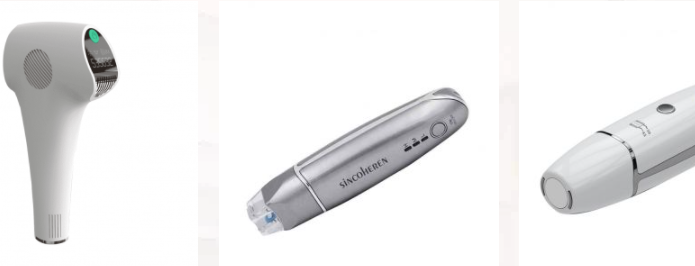Modern laser technology applied to the treatment of cosmetic dermatology is one of the breakthrough developments within the dermatology profession in China in recent years. In just about ten years, laser technology has formed a more complete set of theoretical system and clinical practice, becoming one of the main treatment tools in cosmetic dermatology.
UV protection has received comprehensive attention, skin sunburn, skin tanning and skin photoaging have become popular research topics, a new field of science is being formed, the concept of "light cosmetic medicine" is emerging.
The development of laser aesthetic instruments has gone through three stages.
The basic research phase (1960s): the first meaningful laser was introduced into the clinic in 1960 by Maiman, which consisted of a ruby and could emit a laser with a wavelength of 694 nm. 1961 saw the ruby laser being used for welding on peeling retinas; in 1963, Goldman L began to apply the ruby laser to benign skin lesions and tattoos with success. In 1965 Goldman reported the use of the ruby laser for the effective removal of tattoos without scarring; later the ND:YAG laser was used to remove tattoos and treat superficial vascular malformations. 1968 saw the development of the Nd:YAG laser in Shanghai.
Clinical use phase (1970s): In 1970 Goldman L et al. first used the continuous CO2 laser to treat basal cell carcinoma and cutaneous hemangioma, due to the continuous provision of effective laser power and energy density, overcoming the shortcomings of the early pulsed laser low power and low efficiency.
Development of mature stage (1990s): the early 1990s application of Q-switched laser treatment of pigmentary diseases such as: nevus of Ota, tattoos, etc. has achieved near-perfect treatment results; the mid and late 1990s variable pulse width 532nm laser treatment of vascular diseases has also achieved better results. At this time, advanced sets of laser cosmetic instruments from the United States, Israel and Germany were rapidly introduced into many countries.

In 1983, Anderson RR and Parrish JA put forward the theory of selective photothermal action - that is, the "photothermal separation" theory, which implies that according to the biological characteristics of different tissues, choose the appropriate wavelength, energy, pulse This means that the wavelength, energy and duration of the pulse are selected according to the biological properties of the tissue in order to ensure effective treatment of the lesion while minimising damage to the surrounding normal tissue.
The three effects of light on tissues are
1. Photothermal action.
The photothermal effect is divided into thermal effect, thermal coagulation and thermal exfoliation. Thermal effect: when the temperature rises to a certain level of about 60°C-65°C, the collagen fibres can shrink to 1/3 of their original length and the diameter of the collagen increases, while the integrity of the corresponding tissue structure is not affected; thermal coagulation: when the temperature is above 75°C and long enough to cause thermal coagulation of the tissue, a certain amount of dispersed thermal coagulation will bring about a lasting and obvious skin reconstruction effect; thermal exfoliation: when the temperature is greater than 300°C and long enough to bring about a lasting and obvious skin reconstruction effect; thermal exfoliation: when the temperature is greater than 300°C and long enough to bring about a lasting and obvious skin reconstruction effect. greater than 300°C and for a sufficient time, thermogenic tissue vaporisation, burning and molecular cleavage and plasma formation lead to tissue trauma formation.
2. Photodynamic response
A method of irradiating tissue with light, causing a chemical reaction or series of reactions within the tissue resulting in the effective treatment or improvement of the lesion (target tissue).
3. Photostimulation
Classification
According to the luminescence principle of laser can be divided into, continuous laser beauty instrument, active Q laser, passive Q instrument, fractional pixel laser instrument.
According to the laser beauty instrument luminous principle class is divided into, gas laser, solid laser, and liquid laser, beauty industry all laser mostly, NdYAG solid laser, and co2 carbon dioxide laser.
According to the wavelength of light emitted by the laser beauty instrument can be divided into 532nm 1064nm 2940nm 10600nm super pulse laser and 1550nm mid-infrared laser
There is no such thing as a 550-1100nm wavelength laser, which is a broad spectrum IPL and does not belong to the laser range.









